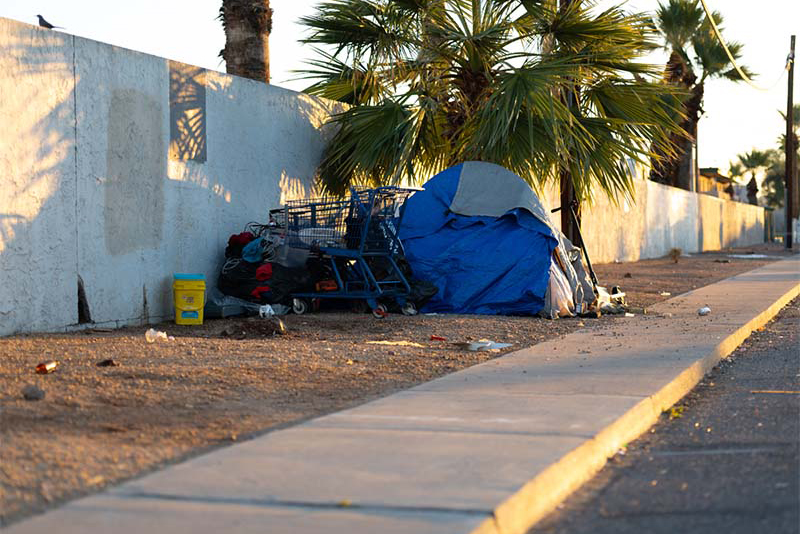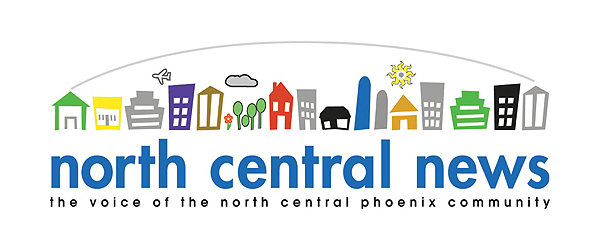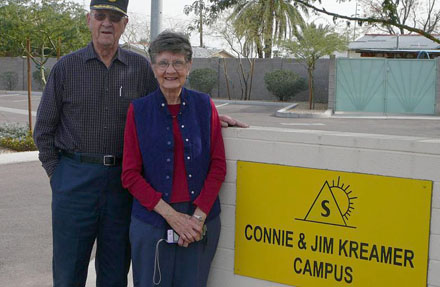
Just under 10,000 people were documented experiencing homelessness in Maricopa County this year, according to MAG’s 2025 Point-in-Time Count. A funding freeze could increase that number by at least 30 percent, according to a Continuum of Care impact report (photo courtesy of Maricopa County Continuum of Care).
After three years on the streets, what helped Benjamin Jeffrey escape homelessness was a house.
Jeffrey, a formerly homeless veteran, benefited from a federal permanent housing program that offers rental assistance, case management and health care services to homeless veterans.
He said the program, which follows a homeless assistance model called Housing First, helped him get back on his feet.
“I got to practice the autonomy of making my own choices, like when I want to get a job, when I want to get treatment,” said Jeffrey, now the president of Mobilizing America’s Commitment to Veterans, a nonprofit that helps veterans with their educational, physical and social needs.
But the policy is being threatened by a July executive order issued by President Donald Trump requiring the Department of Housing and Urban Development (HUD) to abandon it in favor of a Treatment First approach, which requires substance use or mental health treatment before offering housing.
Jeffrey said the order will limit effective treatment options for those experiencing homelessness.
“You can either go to jail, or you can get a shelter, or you can go get a job and you can go get drug treatment,” he said.
HUD funds the Maricopa Regional Continuum of Care (CoC) program, which aims to end homelessness in the county.
Because Arizona does not fund the CoC, it is “heavily reliant” on federal funds, according to Amy St. Peter, community initiatives director of the Maricopa Association of Governments (MAG).
“Eighty-one percent of the funding that we receive right now from HUD supports permanent supportive housing. So that means 81 percent of our funding could be at risk,” she said.
Just under 10,000 people were documented experiencing homelessness in Maricopa County this year, according to MAG’s 2025 Point-in-Time Count. A funding freeze could increase that number by at least 30 percent, according to a CoC funding impact report.
“Our region could see significant increases in homelessness if these policy and funding changes are actually implemented,” St. Peter said.
The executive order also requires states to comply with the Sex Offender Registration and Notification Act to receive funding. Only 18 states are compliant, and Arizona is not one of them.
“No providers from Arizona would be eligible to apply for that funding source,” St. Peter said. “That means that we would lose $52 million each year, every year.”
St. Peter said the CoC Board and MAG are preparing for all possibilities, but that providing care will be far more difficult if funding falls through. The CoC would have to find other funding sources to continue providing services, she said.
“It’s going to be hard, though, to find $52 million from other sources, especially on an ongoing basis,” St. Peter said.
Nathan Smith, CEO of Central Arizona Shelter Services and member of the CoC Board, said his organization is advocating to lawmakers as well as creating backup plans to manage the situation.
“You have no sense exactly of when something could happen and what could happen, so you have to plan out a few different scenarios,” he said. “We have to just play the cards that we’re dealt.”
Jeffrey, a member of the CoC’s Lived Experience Collaborative, said organizations in the region need to work together to ensure programs don’t fail if funding falls through.
“Everybody needs to get on the same page quick, because we cannot rely upon the federal government,” he said.
St. Peter and Smith believe the government might be concerned specifically about Housing First programs that do not require participation in treatment for substance use or mental illness.
“You’ll have people with known drug addictions, for instance, who are going into housing. As it is now, you can go into permanent supportive housing and not at all be required to participate in treatment services,” Smith said.
But even without required treatment, studies have shown that Housing First is more effective at reducing substance use and improving mental health – as well as reducing homelessness – than Treatment First, according to the National Low Income Housing Coalition.
“[Housing First] worked for me, just like it works for anybody that is chronically homeless,” Jeffrey said. “The stick and the carrot approach doesn’t work because it violates our intrinsic motivations. You can’t make somebody go get better.”














































